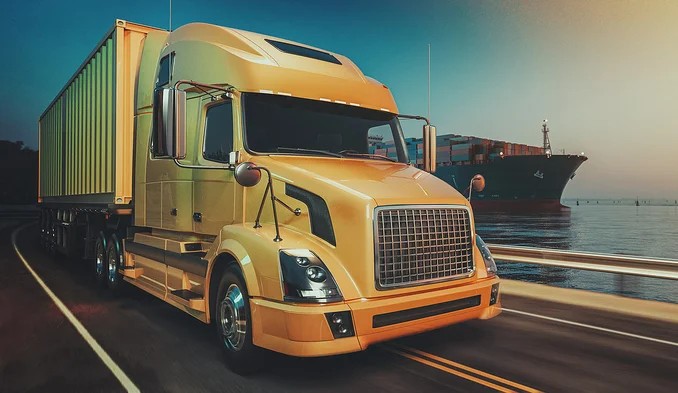How Does Heavy Haul Trucking Differ from Standard Trucking?

In the vast landscape of logistics and freight transportation, not all trucking jobs are created equal. One of the most critical distinctions in the industry lies between standard trucking and heavy haul trucking. While both involve the transportation of goods via trucks, they operate under significantly different conditions, regulations, and equipment requirements.
Understanding these differences is essential for shippers, logistics professionals, and even drivers considering a move into a specialized trucking niche. This blog will break down the distinctions between these two sectors, covering everything from load specifications and permits to safety concerns and economic impact.
What Is Standard Trucking?
Standard trucking refers to the transportation of freight that complies with legal size and weight limits defined by federal and state guidelines. Typically, these are dry van, reefer (refrigerated), or flatbed loads that stay within the following thresholds:
- Maximum Weight: 80,000 pounds gross vehicle weight (combined truck, trailer, and cargo)
- Maximum Width: 8.5 feet
- Maximum Height: 13.5–14 feet (varies by state)
- Maximum Length: 48 to 53 feet (for trailers)
Standard trucking is the backbone of supply chains across the U.S., carrying everything from consumer goods and food to industrial equipment and building materials. It’s governed by relatively straightforward Department of Transportation (DOT) regulations and is highly scalable, with routes optimized for speed and efficiency.
What Is Heavy Haul Trucking?
Heavy haul trucking, on the other hand, deals with loads that exceed legal dimensions or weights. These are known as oversized or overweight loads. Examples include:
- Construction machinery (e.g., bulldozers, cranes)
- Wind turbine components
- Transformers and industrial equipment
- Bridge beams and precast concrete structures
To legally move such cargo, heavy haul trucking companies must acquire special permits, coordinate with multiple authorities, and often use specialized trailers such as lowboys, extendable flatbeds, and multi-axle combinations.
Key Differences Between Heavy Haul and Standard Trucking
1. Permitting and Regulatory Compliance
One of the most significant distinctions lies in the regulatory landscape:
- Standard trucking requires standard documentation like bills of lading, driver logs, and basic DOT compliance.
- Heavy haul trucking requires oversize/overweight permits, which vary by state. A single interstate trip may require dozens of permits.
In some cases, escort vehicles (pilot cars) and route surveys are mandatory, especially for loads exceeding thresholds like:
- Width: over 12 feet
- Height: over 14 feet
- Length: over 90 feet
- Weight: over 100,000 pounds
2. Route Planning and Restrictions
Standard truckers can generally use most state and federal highways. GPS and route optimization software do most of the heavy lifting.
In contrast, heavy haul trucking involves complex route planning, including:
- Checking for bridge weight limits
- Avoiding low-clearance overpasses
- Mapping detours around tight turns or construction zones
In urban areas or on remote roads, special coordination with municipalities or DOT offices may be required.
3. Equipment and Vehicle Types
Standard trucking uses familiar configurations:
- 53’ dry vans
- Reefers
- Basic flatbeds
Heavy haul trucking relies on customized trailers:
- Lowboy trailers: Drop decks designed for tall machinery
- Extendable flatbeds: For long wind turbine blades or pipes
- Multi-axle trailers: For extreme weight distribution
- Steerable trailers: To help navigate curves
These vehicles often come with hydraulic lift systems, suspension control, and modular configurations to accommodate unique cargo profiles.
4. Driver Skill and Training
While all truck drivers must be licensed and trained, heavy haul drivers require:
- Additional certifications and endorsements
- Specialized experience in load securing, maneuvering, and weight distribution
- The ability to handle emergency scenarios on remote or restricted roads
A heavy haul trucker must also understand state-specific laws and coordinate with local authorities, making this job more complex and responsibility-heavy than standard trucking.
5. Load Securing and Safety Measures
Securing a pallet of boxed goods in a dry van is relatively straightforward. But securing a 75-ton industrial generator requires:
- Custom rigging
- Multiple chains, straps, and tensioning systems
- On-site crane operations or rigging crews
Heavy haul loads also face more stringent safety inspections, both pre-trip and en route. Any shift in cargo during transport can result in catastrophic failure or road hazards.
Challenges Unique to Heavy Haul Trucking
Heavy haul trucking presents operational and logistical challenges that don’t typically arise in standard freight:
- Weather dependency: High winds or poor visibility can ground oversized loads.
- Permit delays: Waiting on approvals can throw schedules off track.
- Public safety coordination: Highway patrol, escort vehicles, and traffic control may all be part of the journey.
- High insurance and liability costs: The stakes—both financial and safety-related—are higher, increasing premiums and requiring more extensive risk mitigation.
Economic and Industrial Impact
Heavy haul trucking plays a vital role in the infrastructure and industrial development of regions:
- Power plants, factories, and bridges rely on heavy haul equipment deliveries.
- Wind and solar energy sectors depend on specialized transport for long turbine blades or large battery packs.
- The military and aerospace industries also use heavy haul for tanks, launch pads, and satellite platforms.
Without heavy haul trucking, many large-scale construction and energy projects would grind to a halt.
When Should a Business Choose Heavy Haul Trucking?
If your cargo:
- Exceeds 8.5 feet in width
- Weighs more than 80,000 lbs
- Is unusually tall or long
Then you need heavy haul trucking.
More than just transportation, it’s a logistical operation that includes engineering calculations, safety planning, and regulatory navigation. Choosing an experienced heavy haul partner can mean the difference between a seamless operation and an expensive setback.
The Future of Heavy Haul Trucking
As infrastructure modernizes and renewable energy projects increase, heavy haul trucking is becoming more critical than ever. The global push for wind, solar, and modular construction means more oversized loads are being transported across vast distances.
Technology is also helping to streamline processes:
- Route planning software with topographical data
- Real-time weight distribution sensors
- Drones for aerial route inspections
But even with tech, the human factor—skill, coordination, and adaptability—remains indispensable.
Conclusion
While both standard and heavy haul trucking serve crucial roles in freight transportation, they differ significantly in scope, responsibility, and operational complexity. Heavy haul trucking isn’t just about moving big loads—it’s about strategic execution, safety-first protocols, and advanced coordination across regulatory frameworks.
Whether you’re a shipper planning a project or a driver seeking a new challenge, understanding the world of heavy haul trucking gives you a deeper appreciation for what it takes to move the immovable.



